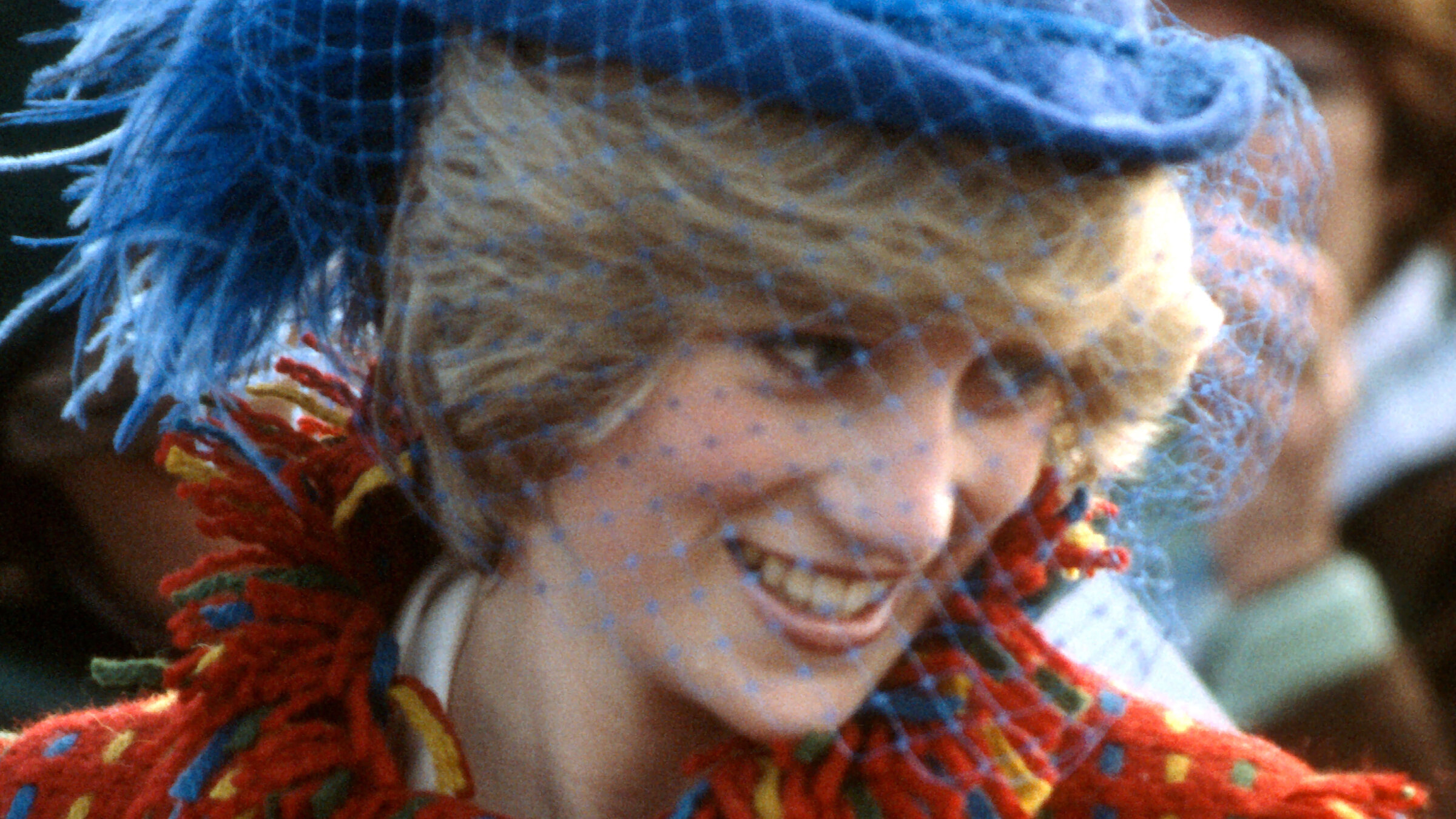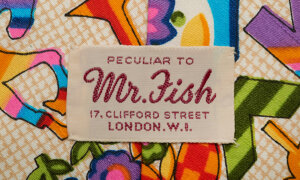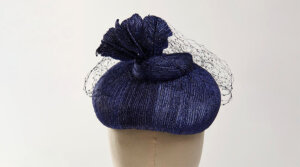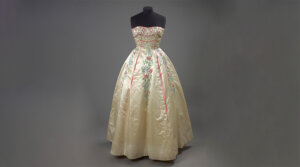In Princess Diana’s red dress, a symbol of the Jewish rise to prominence in the UK shmatta business
A Museum of London exhibit pays homage to the Jews who helped to create outfits for everyday folk as well as the likes of Jimi Hendrix and David Bowie

Princess Diana, circa 1982, wearing a red coat designed by Bellville Sassoon and a John Boyd hat. Photo by Getty Images
The shmatta business began in the U.K. a lot like it did in cities across North America — with Jews fleeing political hostility, having little but their stitching expertise. With innumerable white-collar jobs verboten to Jews, many who lacked the “making skills” learned them, fast.
In London — open to Jewish immigrants but not particularly friendly toward them — the story is more obscure than the American version. Though Jews have been part of the city’s history since the Romans, many arrivals in the past 150 years settled by accident, taking temporary jobs en route to the New World that turned permanent. Others hid their Jewish identities by inventing ambiguous new names. If they succeeded, their heritage was rarely factored in, let alone credited.
Lucie Whitmore, fashion curator at the Museum of London and the force behind its new exhibition Fashion City, has material perspective in this regard. Her great-grandparents ran a successful leather-goods business in Neubau, Vienna, before fleeing to the U.K. between the wars. In an atmosphere rife with antisemitism, they changed their surname and resumed business in London’s East End.
When Whitmore was a doctoral student at the University of Glasgow, she joined fellow academic Bethan Bide on a deep dive into fashion of the 1940s. Much of what they found lacked the provenance usually recorded for archival garments. They eventually traced many anonymous pieces to Jewish dressmakers and businesses.
It was a galling realization, considering the contribution made by Jewish workers to what has become a major fashion center. “We shared a real fear of losing that history and realized, ‘We need to go in and have a look, see what we’ve got.’ What we found was amazing and very broad,” Whitmore said. After Whitmore took up the Museum of London post, she pitched the idea for the exhibition, on view now at the Museum of London’s East End satellite. Her quest to uncover “how Jewish Londoners shaped London style” became the tagline.
Fashion City begins in 1881, at the start of the Great Migration. In the years before the World War I, more than 100,000 Eastern European Jews found their way here, and 60% of them found work in the garment trade. They ranged from umbrella-sellers and barrow-pushers to Michael Marks, the Belarusian tailor who founded Marks & Spencer in 1884. Moss Bros, a small Covent Garden suit-rental business, expanded into a successful chain in the 1890s led by scions Alfred and George Moss. The company still operates 130 stores across the U.K. and Ireland.

Yet Whitmore is reluctant to use words like “successful.” She has tried hard to emphasize great work and compelling stories from known couturiers down to “people who were just surviving.”
She cites Sophie Robbin, a Polish émigré stuck in East London when her family’s plans for America were thwarted. Robbin bounced around several jobs in the garment district, married a tailor, moved to a flat above his workshop and then followed the familiar trajectory of Jewish Londoners: first to prestigious West London, then onward to a Jewish community in the northeast.
“She had a lovely, normal life,” Whitmore said, “but she was incredibly skilled. In some photos we have she wears her own garments, so you can also see her personal taste.”
Later, we see items from dressmaker Nettie Spiegel, a Kindertransport arrival who designed splendid simcha dresses for Jewish mothers. And we learn about Hans Schneider, a refugee from Nazi Germany who headed up design at Marks & Spencer between 1949 and 1970. Schneider was chiefly responsible for M&S’s transformation into a fashionable brand, even though, Whitmore said, “those coming to London in the 1930s faced more antisemitism and anti-German hostility than their predecessors.”

Some newfound pieces have found their way to the Museum of London’s permanent collection. The grandchildren of seamstress Peggy Lewis recently donated a 1950s dress with the intricately detailed beadwork that became her trademark within the community. Partially unfinished, it offers a glimpse into a process that was virtuosic, even though Lewis was a relative unknown throughout her life.
In the manner of the grandiose Dior and McQueen surveys that museumgoers seem to love, Fashion City makes much of the bold looks worn by 20th-century royalty and rock stars. A spotted red coat commissioned by Princess Diana from high-end house Bellville Sassoon is a selling point. Co-founder David Sassoon is an Iraqi Jew who grew up in London in the 1930s and ’40s. Whitmore also spotlights a canary-yellow pillbox hat by Otto Lucas, a German-born master milliner who operated out of Bond Street, and flamboyant embroidered looks by Michael Fish, whose label Mr. Fish was a go-to for Jimi Hendrix.

These big-ticket outfits belong to the aforementioned uncatalogued collection Whitmore has worked to properly address over the past few years. As much as any miniskirt or Sgt. Pepper jacket, they encapsulate Britain’s place at the heart of Swinging ’60s culture, and the public’s continued fascination with royalty.
Understandably, the exhibition has relied heavily on outreach. Until quite recently, the museum was still seeking pieces associated with notable London Jews: a Mr. Fish dress worn by David Bowie on the cover of his album The Man Who Sold the World, and items designed for the Beatles by Cecil Gee, a popular Lithuanian-born merchant who operated under an assumed name.
More successful was the hunt for oral histories. Whitmore says she fielded 150 calls from surviving relatives, who introduced new names and insights to the collection. To honor them, she devised a tribute wall at the exit that lists every character. “We could fill three museums [with their stories],” she said. “What we got was bigger than exhibit was able to communicate.”
The exhibit Fashion City: How Jewish Londoners Shaped Global Style runs through April 14, 2024, at the Museum of London.






















